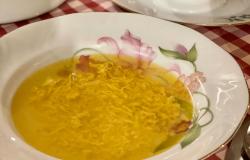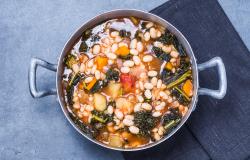How to Make Laurel Evans’ Chestnut Flour Gnocchi with Butter and Sage
Chestnuts and chestnut flour have long been staples in Ligurian cuisine. The hills beyond Genoa and throughout the crescent-shaped region are filled with leafy chestnut groves, and in the fall the trees give fruit in abundance. Fresh chestnuts are roasted and enjoyed as a snack, baked into cakes, transformed into creamy jam, or candied into marrons glacés. Nuts are also dried slowly over low heat and then finely milled to produce flour with a beguiling flavor, both sweet and slightly bitter, with the barest hint of smoke.
Chestnut flour was historically important in this region in which wheat was, until recently, a rare commodity, and it is still used to make rustic cakes and pasta. It’s chestnut flour that gives these gnocchi their unique earthy flavor and pleasing chewy-tender texture. The recipe comes from Liguria the Cookbook: Recipes from the Italian Riviera, by Laurel Evans. Evans, an American who is married to a Ligurian and is a longtime resident of the region, says the gnocchi pairs well with either classic Genoese pesto or butter and sage. With fall in full swing, I chose the latter when I made these recently for my family. The woodsy herb, lightly sizzled in butter, is right at home tossed with the subtly sweet, earthy gnocchi.
Yield: 4 to 6 servings
Place the potatoes in a wide pot, cover with cold water, and add 3 tablespoons of salt. Bring to a boil over high heat. Lower the heat and simmer until the potatoes are completely tender, 20 to 30 minutes, depending on the size. Remove the potatoes with a slotted spoon and set aside until just cool enough to handle.
Peel the potatoes, break them into chunks, and press them through a potato ricer onto a clean work surface. Alternatively, mash them in a large bowl with a fork or potato masher, then pour onto a clean work surface. Sift the flours together over the potatoes, sprinkle with 1/2 teaspoon salt, and drizzle with the olive oil. Push and fold the mixture with your hands or a bench scraper until a shaggy mass forms. Knead until the dough is soft, pliable, and cohesive and all the flour is incorporated. (If the dough seems dry, drizzle in a little more oil, 1 teaspoon at a time; if it seems wet, sprinkle in a tiny bit more flour.) Do not overmix, as the gnocchi will be tough. But be sure to knead enough so that you can roll out ropes of dough that don’t break apart.
Line two rimmed baking trays with parchment and sprinkle with flour. Break off a handful of dough (cover the rest with a kitchen towel so it doesn’t dry out). Roll the handful of dough into a rope about 3/4 inch thick. Use a bench scraper or knife to cut the rope at 1-inch intervals to make rectangular gnocchi. If you like, you can gently roll each gnocco down the tines of a fork to make the characteristic grooves; otherwise, leave them as they are. Transfer the finished gnocchi to a prepared tray, being careful not to overlap or let them touch each other, or they will stick. Repeat with the remaining dough. Lightly sprinkle the tops of the gnocchi with flour.
Bring a large pot of water to a rolling boil and salt it generously. While the water is heating, melt the butter in a skillet over medium-low heat. When the butter has melted and starts to sizzle lightly, stir in the sage leaves. Cook briefly, until the sage leaves are just beginning to sizzle and darken. Turn off the heat and cover to keep warm.
Cook the gnocchi in batches in the boiling water. They are ready a few seconds after they float to the surface of the water. Gently transfer them to a large bowl with a spider or slotted spoon. Drizzle the butter and sage on top and gently toss to coat the gnocchi. Sprinkle it with Parmigiano cheese and serve.





